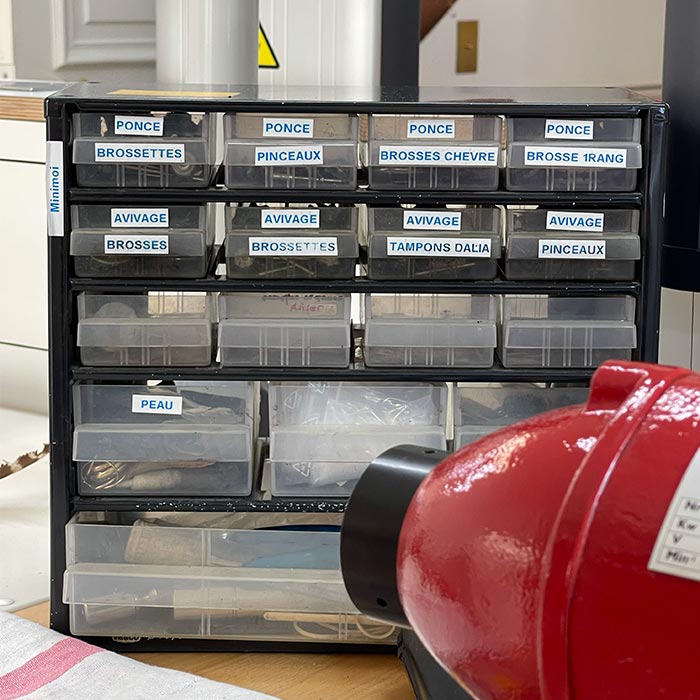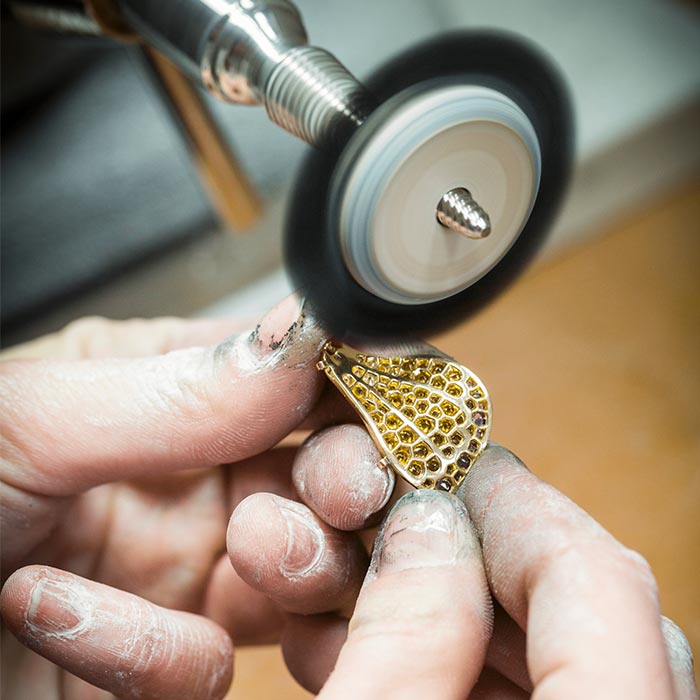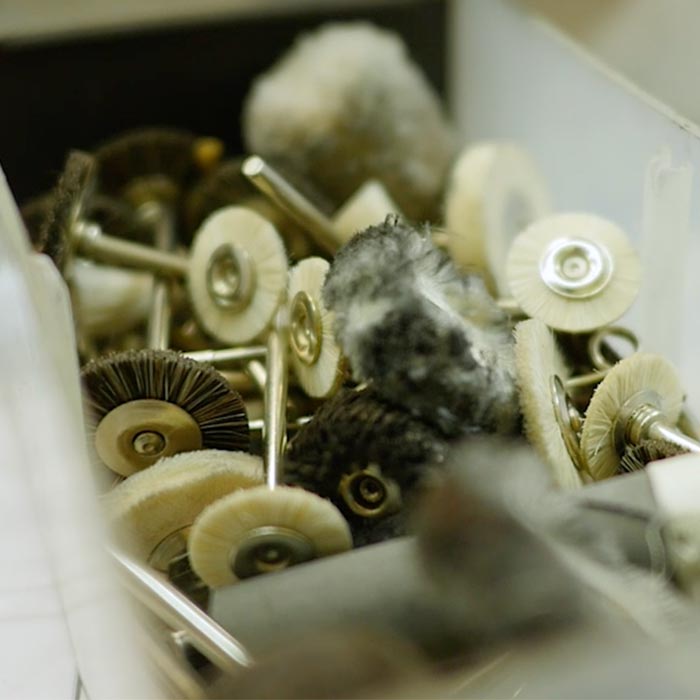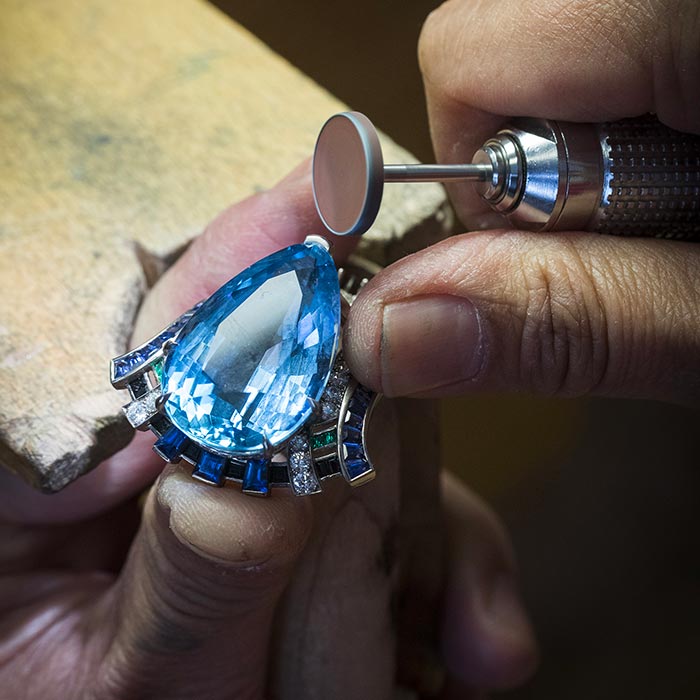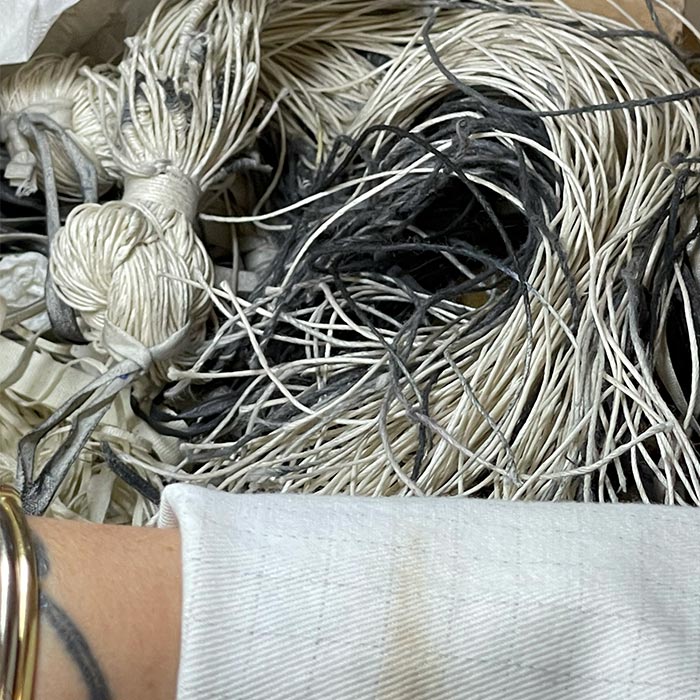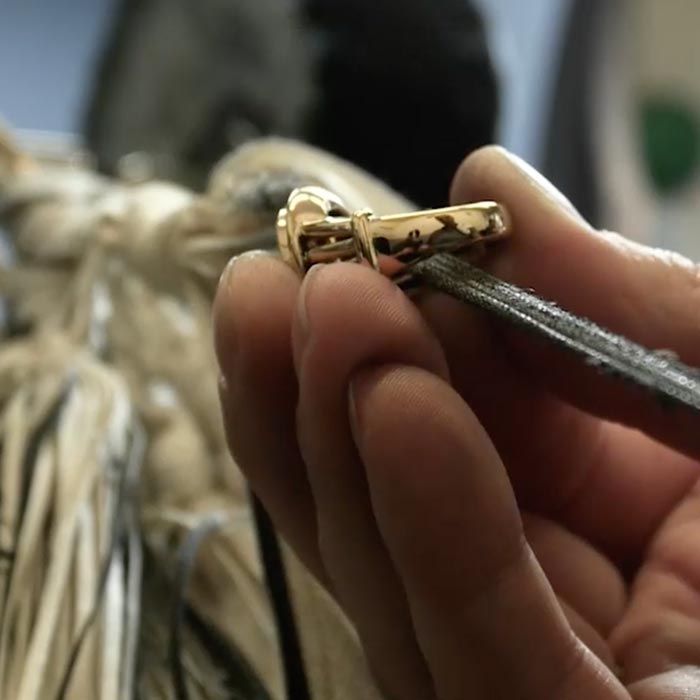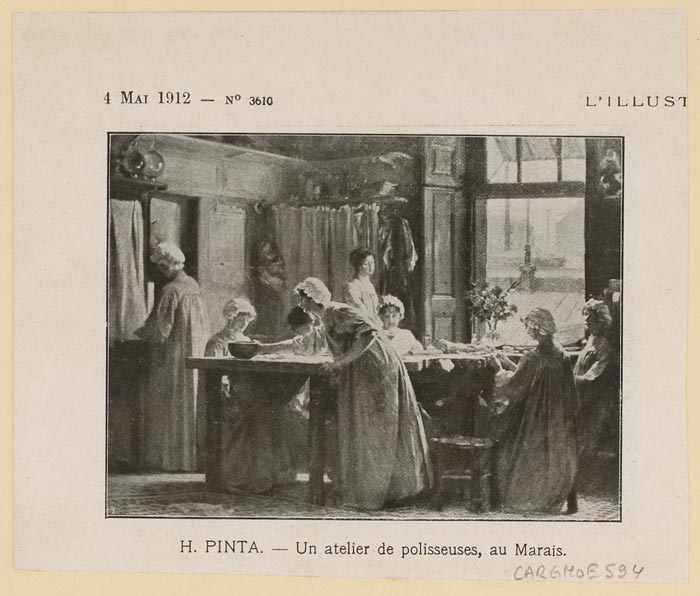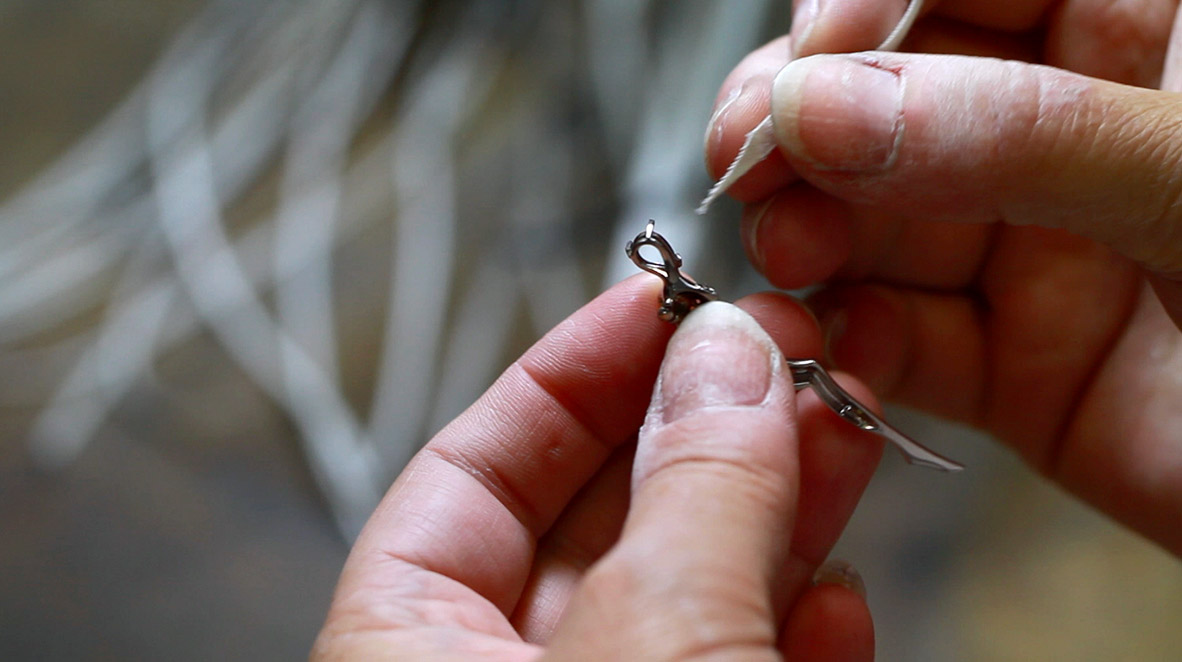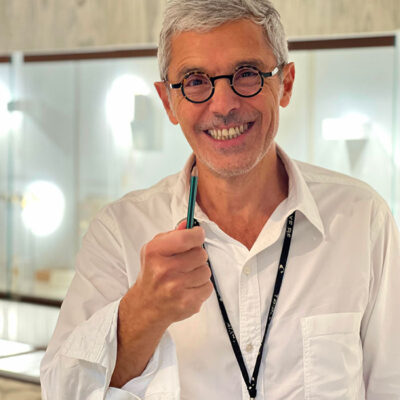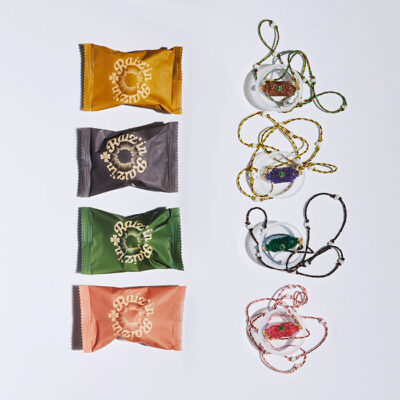Business
02 October 2022
Share
Urgent: polishers wanted!
Jewelry houses are suffering from a grim lack of manpower, especially for polishing – a crucial step in the manufacture of jewelry.
By Sandrine Merle.
It goes without saying that any piece of jewelry must shine, and that gold must be so perfectly smooth you can see your reflection in it. To achieve this result, the highly delicate polishing phase is crucial. In fact, it has to be repeated many times – each time a craftsperson (jeweler, setter, engraver, etc.) intervenes, because making a piece of jewelry is a team effort where what any one person does always has an impact on what all the others do. “Bad polishing can completely ruin a piece of jewelry,” says jeweler Lorenz Bäumer.
A demanding role
“In reality, no one has any idea of the complexity of this role, or the rigor and even self-sacrifice required to obtain the desired result with this metal,” explains Marie Chabrol, a teacher at the Saumur Institute, who worked for 20 years as a polisher in Parisian workshops. Bear in mind that the level of quality required today by the great jewelers, and especially in high jewelry, is astonishing: everything is tested with 50x magnification binoculars, which was not the case in the 70s! You therefore need the right working methods to polish the angles without rounding them, to access the corners under the claws without damaging the set stone, etc. Not the slightest scratch should pass unnoticed – it would end up being as obvious as a nose in the middle of someone’s face. It’s easy to understand why the polisher screams when big fingers approach a jewel without gloves!
A female-dominated profession
“For a very long time, the profession was not valued and was poorly paid,” explains Michel Baldocchi, director of the Haute École de la Joaillerie. It’s repetitive and dirty and your fingers and the tip of your nose are permanently blackened by abrasives. But the respiratory problems are more serious still because even with masks, the dust gets everywhere. “Polishers used to look like little chimney sweeps, it was said that the blacker their faces, the more beautiful the jewel!” recalls a craftsperson, with a hint of irony. This says a lot about the atmosphere of the workshops of the past: until the early 2000s, they were predominantly male except precisely for polishing and stringing pearls. “You had to have a good repartee, a sense of humor and plenty of character to get by in a workshop,” recalls one polisher.
Polishers : a rewarding job, despite everything
Polishing is not sawing or welding the material but taming it, playing with it, giving it the most beautiful aspect possible using the best techniques. For Gauthier Morlet, a young jeweler-setter from the Sprague collective, “There’s something truly poetic about polishers working for hours to obtain a jewel that glitters and sparkles.” It’s almost sensual… “The more technical and difficult the pieces are, the more fun it is,” says Marie Chabrol. Because it’s still very manual work where you have to juggle with dozens of tools, as well as using plenty of brainpower. “I replaced the Emery paper normally placed in the split metal rod of the fly holder with a piece of cloth”, says Marie Chabrol, by way of example.
Serious times…
Polishers seem to be a thing of the past. So much so that independent jewelers are increasingly taking charge of this phase… So the industry is getting organized, as evidenced by the partnership between the Haute École de Joaillerie and the French Employment Office, which has successfully prepared about twenty people from other fields (such as hairdressing) for the Certificate of Professional Qualification. For Marie Chabrol, “The opportunity to polish wedding rings, as if on a production line, helps people to get started and gain dexterity, but certainly won’t give them a taste for the profession. The solution is to teach adaptable techniques so that the craftsperson becomes autonomous, even on the most complex pieces.” This being said, patience is required: about ten years of practice is necessary to approach OJ3 level and then three or four more to reach OJ4, i.e. to become a Highly Qualified Jewelry Worker. See you in 10 years!
Related articles :
TFJP x Comité Colbert, the savoir-faire and métiers of gold jewelry


